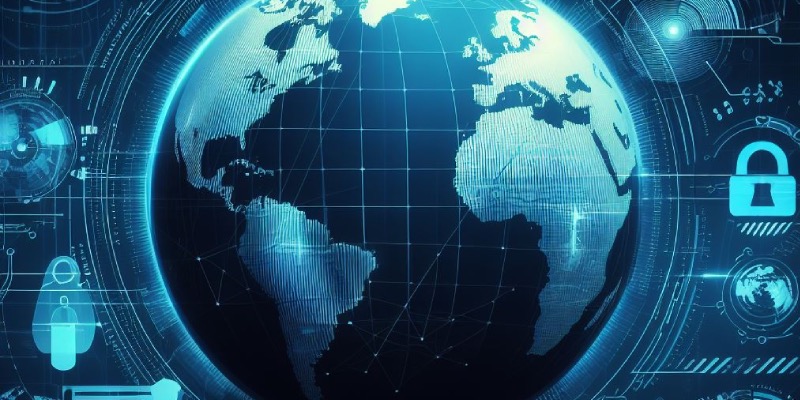Blog The Power of Global Community in Threat Research and Security Innovation
The Power of Global Community in Threat Research and Security Innovation

Much ground has been covered in this terrain. Global institutions, platforms, treaties, and programs have been established to mount a unified effort to proactively mitigate cyber threats — however and wherever they occur. These international communities conduct threat research, provide effective response strategies, develop best practices, and share resources for any organization that wants to continuously improve its security posture.
Scale and Complexity of Global Security Threats
As individuals and organizations become more interconnected, security threats — cyber or otherwise — have also grown in scale and complexity. These threats include climate change, which has already triggered mass migrations and disputes over dwindling resources; domestic polarization and socio-political extremism; terrorism, the destructive message of which can be articulated and magnified through social media; and cybercrime, which already causes annual damages worth trillions of dollars, while also threatening to destroy critical infrastructures in its guise as cyberterrorism.
These security threats are global, complex, and dynamic. Nothing short of a concerted, proactive, and adaptive approach can help mitigate their impact. Instead of relying on reactive and inflexible strategies, security professionals and threat researchers should build dynamic and intelligent methods that can address such challenges in a holistic and preventive manner.
In cybersecurity, that entails a global community of institutions and experts that perform key functions:
- Identify Threats. Discover, dissect, and report potential hazards that might otherwise fly under the radar. The collected and curated knowledge of all such threats improves the broad understanding and mitigation of emerging threats.
- Share Information: Open, borderless communication channels allow for the fast and efficient dissemination of threat information. This provides stakeholders with crucial insight on how best to address the identified risks.
- Take Collective Action: A unified front against a common threat amplifies the odds of neutralizing that security risk.
Key Components in Threat Research and Security Operations
There are many aspects to threat research and security operations. Here are the main pillars:
- Asset Identification — involves the identification of key business objectives and the crucial IT resources required to achieve those objectives.
- Threat Analysis — involves the examination and cataloging of potential security hazards that could harm the identified assets, while also considering the likelihood and impact of such hazards.
- Vulnerability Assessment — involves a thorough review of the organization’s IT environment to pinpoint existing vulnerabilities and potential weak spots.
- Risk Mitigation — involves the development and implementation of strategies to address the identified risks.
- Monitoring and Reporting — involves the continuous tracking and assessment of the effectiveness of the organization’s security measures.
How Global Communities Enhance Threat Research and Cybersecurity
Common threat libraries, resource-sharing, and the collective development of best practices characterize many of the global communities that wage an ongoing arms race with cyber criminals. Joining and supporting such global communities can deliver many benefits:
- Real-Time Risk Awareness — Global communities manage some of the most updated threat libraries and platforms. These resources empower organizations with real-time insights for smarter decision-making and resource allocation.
- Improved Security Management — By establishing best practices and developing dynamic threat mitigation strategies, global communities help organizations implement more effective security measures such as continuous monitoring and proactive risk mitigation.
- Enhanced Collaboration — Global communities help foster a culture of shared responsibility. They encourage participating individuals and organizations to work together in improving security measures and in mounting a consolidated defense against security threats.
Challenges and Considerations
Collaborating with a global threat research community delivers many compelling benefits. But it also introduces many challenges. These include:
- Resource requirements: Establishing and maintaining a global threat research community requires significant resources such as adequate tools, services, and storage for threat data research and community collaboration. It also requires the participation of experts to build and curate its knowledge base and shared libraries.
- Data privacy and security: Threat research may involve the handling of different types of data, including those that might be covered by data privacy and protection regulations.
- Organizational culture: A global community can be prone to cultural conflicts given the diverse backgrounds, values, and goals of its members.
These challenges and limitations are not insurmountable, but the solution requires commitment, careful planning, and cooperation.
For businesses that would rather focus on the benefits without experiencing the challenges of actual involvement, partnering with service providers that tap and tailor crowd-sourced cybersecurity resources for their clients is a simple but adequate solution.
TrustNet’s Footprint in Global Efforts to Improve Cybersecurity
TrustNet actively participates and contributes to global communities that combat cyber threats. In more ways than one. Our leaders serve as resource experts for security consortiums while our products harness the power of crowd-sourced intelligence.
For example, our international cybersecurity team manages the company’s platform for threat detection and response. But this platform also connects with a global community of threat researchers and thousands of security professionals from 140 countries.
This shared resource empowers our team to identify new vulnerabilities and to update our threat intelligence platform every 30 minutes, enhancing our clients’ ability to find and neutralize cyber threats before these can harm their systems.
This threat mitigation capability forms part of our managed security and compliance services. It is also integrated in the iTrust Cyber Risk Ratings Platform.
Conclusion
The active global community of security experts and threat researchers has been a game changer in the ongoing fight against cybercrime.
This community allows for the sharing of threat intelligence and the latest insights on attack trends, indicators of compromise, and mitigation strategies. Members learn from each other’s experiences, jointly developing best practices, exchanging tactics on how to optimize security measures, and building the groundwork for further innovation.
Cybercrime does not respect borders. But if more experts and institutions join the community, threat actors would have a much smaller legroom to maneuver. And fewer places to hide.




